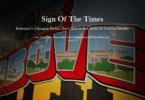It’s the source of many early morning headaches and commuter anger.
Traffic delays in Melbourne. Even in off-peak times.
The cause? Cars. More and more of them.
2016 Census data has revealed more than 500,000 vehicles have hit our roads since 2011, with vehicle registrations sky-rocketing from 11.5 per cent to 4.7 million in the same time.

Traffic is worst in Melbourne at peak-hour times as many make their way home from work (Photo: Joshua Dawe)
The boom is being fuelled by a surge in three-and four-car families in outer suburbs.
Figures show the city’s outer southeast suburbs own the most cars per household, with the Casey area boasting almost 8000 houses with at least four vehicles. Other hotspots include the Yarra Ranges with 5601 homes and Hume with 5025.
[infogram id=”vehicles_per_house” prefix=”T18″ format=”interactive” title=”Vehicles per House”]Doncaster’s Andrew Jackson live in a house with five people and six cars.
“It’s definitely congested, my brother and I have to park in the street and we’ve both noticed a real growth in the number of vehicles that do the same,” he says.
“In some instances it’s caused accidents because some park too close to driveways or street entrances.”
An electrician by trade, Andrew owns two cars, with one used on weekdays for work while his own car sits at home.
“I need another car because I can’t drive the company one on weekends and they pay the fuel I use for work during the week,” he explains.
“I think you’d find that with loads of tradies and probably a key reason for this rise.”
[infogram id=”vehicle_numbers-2″ prefix=”eKp” format=”interactive” title=”Vehicle Numbers”]The high ownership rates continue to reflect population growth, with close to six million Victorians heavily relying on cars, with a lack of public transport in some of these areas forcing some to purchase multiple cars.
Thankfully, the same sort of numbers aren’t seen in the city, with many of our inner suburbs holding the lowest car ownership levels.
Over 28,000 homes in the City recording no vehicles, with more apartments springing up boasting easy access to public transport.
Moreland had 8415 homes with no vehicles, Port Phillip had 8182, Yarra 7649 and Stonnington 7470.

Sometimes it can feel a bit like a blur when travelling through the city
While the numbers don’t have a direct correlation with traffic problems, Andrew says there’s no doubting more and more people are relying on their cars to get to work.
“It depends on when you leave but the problems are so unpredictable, one day it might be okay and then horrific the next, but you just have to cop it because there’s no other option.”
The data also details how drivers in general are racking up longer distances on our freeways and arterial roads, as the number of kilometres travelled tops 29 billion, up from 27.6 billion.







